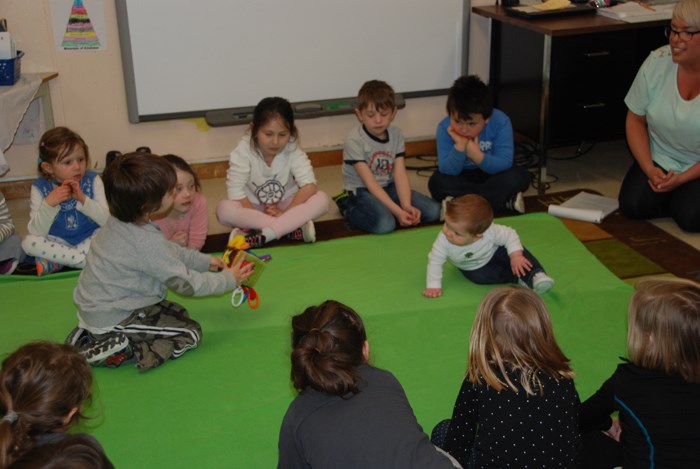 Roots of Empathy is an evidence-based classroom program that has shown significant effect in reducing levels of aggression among schoolchildren by raising social/emotional competence and increasing empathy. The program reaches elementary schoolchildren from Kindergarten to Grade 8. Roots of Empathy's mission is to build caring, peaceful, and civil societies through the development of empathy in children and adults. The program has been implemented in the ALCDSB as a strategy to "promote healthy relationships that support the spiritual, intellectual, emotional, social and physical well-being of all." (ALCDSB BIPSAW 2015-2016). For more information, visit
http://www.rootsofempathy.org/
Roots of Empathy is an evidence-based classroom program that has shown significant effect in reducing levels of aggression among schoolchildren by raising social/emotional competence and increasing empathy. The program reaches elementary schoolchildren from Kindergarten to Grade 8. Roots of Empathy's mission is to build caring, peaceful, and civil societies through the development of empathy in children and adults. The program has been implemented in the ALCDSB as a strategy to "promote healthy relationships that support the spiritual, intellectual, emotional, social and physical well-being of all." (ALCDSB BIPSAW 2015-2016). For more information, visit
http://www.rootsofempathy.org/
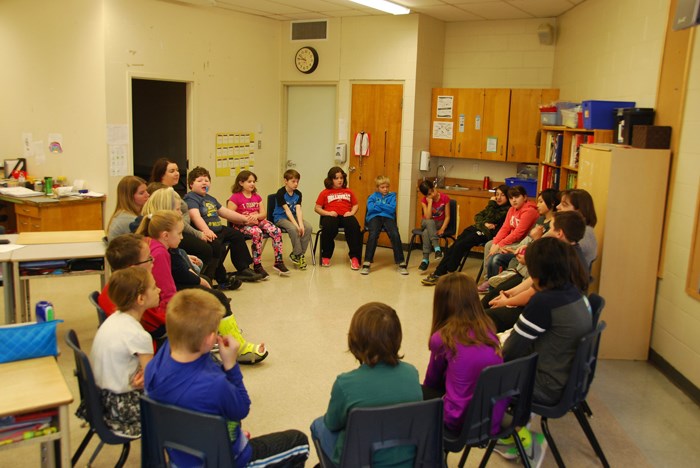 Restorative Practice is a way of thinking and being based on a foundation of caring, collaborative, and respectful relationships. Restorative Practice builds and strengthens healthy relationships and community and provides a supportive framework to prevent, respond to, and repair harm through a continuum of practice.
Restorative Practice is a way of thinking and being based on a foundation of caring, collaborative, and respectful relationships. Restorative Practice builds and strengthens healthy relationships and community and provides a supportive framework to prevent, respond to, and repair harm through a continuum of practice.
The Algonquin and Lakeshore Catholic District School Board utilizes circle, a program that demonstrates the foundations of restorative practice.
Click here to watch a video of students and staff sharing their thoughts on circle.
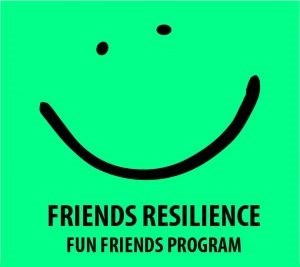 Fun Friends Program helps guide the social and emotional development of children aged 4-7, by using fun, play-based group activities. Parents and teachers will notice the following changes in a child: Increased confidence, more able to cope with stress and fear, enhanced social skills, able to communicate better with adults, boosted self esteem and generally happier and more enthusiastic.
Fun Friends Program helps guide the social and emotional development of children aged 4-7, by using fun, play-based group activities. Parents and teachers will notice the following changes in a child: Increased confidence, more able to cope with stress and fear, enhanced social skills, able to communicate better with adults, boosted self esteem and generally happier and more enthusiastic.
The secret to Fun Friends Program is the group activities that help children to learn new skills. There are a number of different play-based activities that teach the following skills: smiling, making eye contact when communicating, speaking with a brave and confidence voice, talking about and understanding feelings in themselves and others (empathy development), helping other people like family, peers and teachers, understanding their body clues (e.g. tense means stressed, butterflies mean nervous), relaxation techniques, approaching groups of peers and making friends, trying new things and approaches to problem solving and identifying negative thoughts and turning them into positive thoughts.
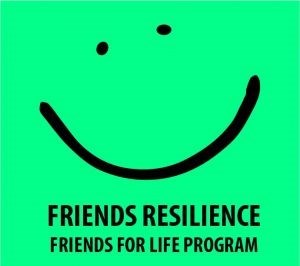
Friends for Life Program is a social skills and resilience building program that is recognized by the World Health Organization for over 12 years of comprehensive research and as an effective means to prevent anxiety for children aged 8-11. Friends for Life is proven to reduce and give participants the tools they need to cope in stressful and challenging situations.
Further to anxiety treatment, Friends for Life also improves a participants social skills, ability to focus, confidence, and the ability to relax and regulate emotions. Friends for Life teaches participants to cope with their feelings and the feelings of others by training them to think more positively and to relax and regulate their bodies. The program also teaches confidence and ways to tackle problems which helps build self esteem as participates start to solve problems they would have previously shied away from. Most important, Friends for Life enables participants to be happy, smile, and be brave which helps them easily transition to their teenage years.
For more information, visit:
https://www.friendsresilience.org/friendsforlife
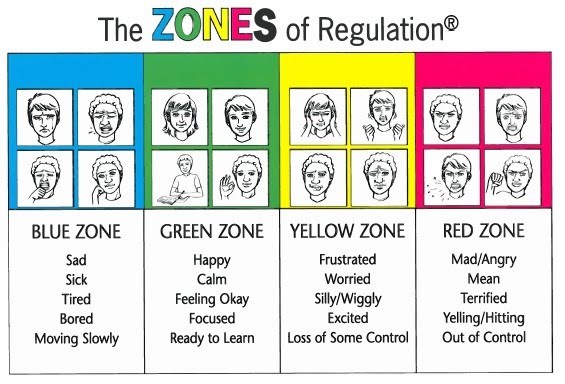
Zones of Regulation is a systematic, cognitive behaviour approach used to teach self-regulation by categorizing all the different ways we feel and states of alertness we experience into four concrete zones. The Zones curriculum provides strategies to teach students to become more aware of, and independent in controlling their emotions and impulses, managing their sensory needs, and improving their ability to problem solve conflicts. By addressing underlying deficits in emotional and sensory regulation, executive functions, and social cognition, the curriculum is designed to help move students towards independent regulation.
The Four Zones: Our Feelings & States Determine our Zone:
Red Zone: used to describe extremely heightened states of alertness and intense emotions. A person may be elated or experiencing anger, rage, explosive behaviour, devastation, or terror when in the Red Zone.
Yellow Zone: also used to describe a heightened state of alertness and elevated emotions; however, one has some control when they are in the Yellow Zone. A person may be experiencing stress, frustration, anxiety, excitement, silliness, the wiggles, or nervousness when in the Yellow Zone.
Green Zone: used to describe a calm state of alertness. A person may be described as happy, focused, content, or ready to learn when in the Green Zone. This is the zone where optimal learning occurs.
Blue Zone: used to describe low states of alertness and down feelings, such as when one feels sad, tired, sick, or bored.